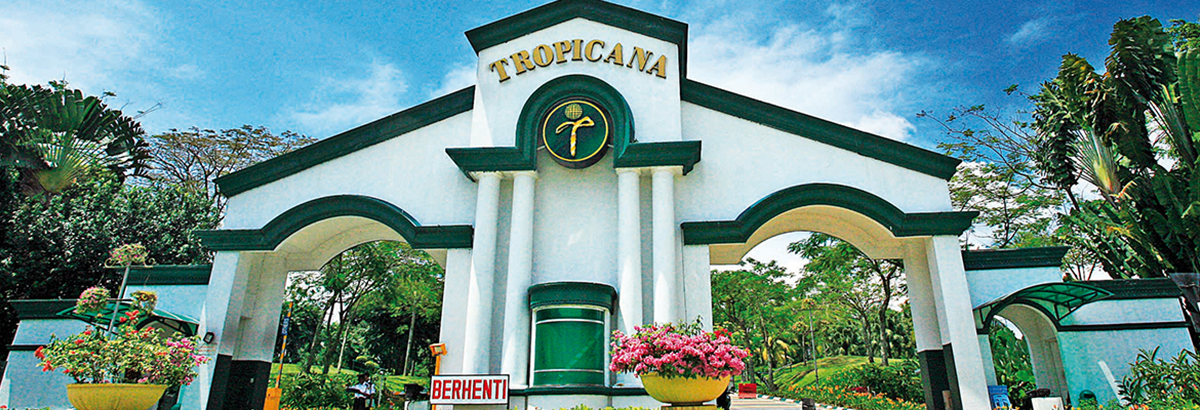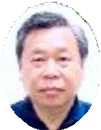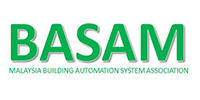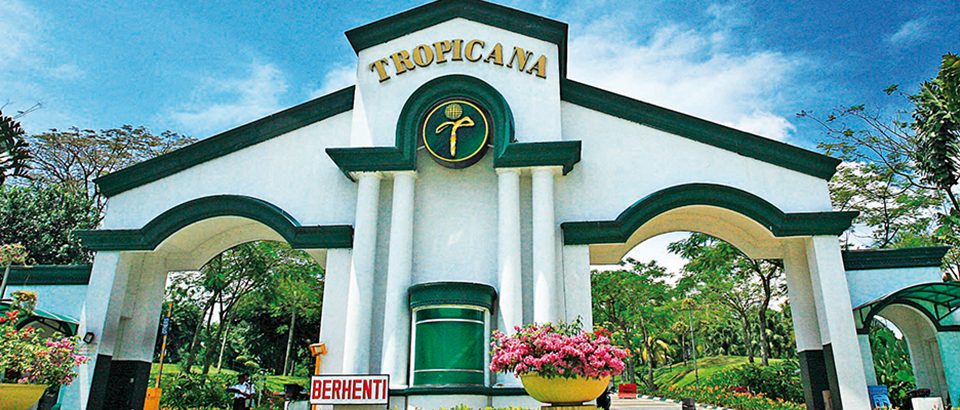Basam System Integrator Training Course 2022 #1/2022

ACEM-BASAM SYSTEM INTEGRATOR TRAINING COURSE & EXAM #1/2024
January 12, 2024Basam System Integrator Training Course 2022 #1/2022

EVENT DATE : 28-30th June, & 9th July 2022
REGISTRATION FEE
- BASAM & ALLIED ORGANISATIONS (RM1200)
- PUBLIC & OTHERS (RM1500)
VENUE
Ballroom V, Main Wing, Tropicana Golf & Country Club, Jalan Kelab Tropicana, 47410 Petaling Jaya, Selangor Darul Ehsan.
PROGRAMME
DAY 1: Overview of BAS and its important role to ACMV Systems.
These sessions will give the audience an overview of the contribution & relationship of BAS with high performance building over the last few decades. Subsequently, the relationship with each potential application of BAS to ACMV system will be discussed in detail.
DAY 2: BAS relationship with building Mechanical & Electrical systems.
Sessions in the second day will focus on the relationship between BAS and Mechanical & Electrical systems. In depth details & illustration will be given. The interfacing concerns between BAS and other services will be highlighted. The ACMV core topics in morning session can be very packed and may spill over to the afternoon session if interest & participation from the floor is intense.
DAY 3: Fundamentals & Practical Approach to BAS data analysis.
Sessions in the third day will focus on the most valuable tool of BAS – the trend analysis of its acquired raw data. Various constraints will be discussed and clarification are sought from BAS specialists, M&E Consultants & Owner for this rarely used but important implementation. Illustration of the upcoming monitoring based commissioning (MBCx) as a new tool in performance enhancement and diagnosis will be presented together with practical examples in an interactive manner.
DAY 4 (Half Day): Project Assignment & Presentation
*Certificates of competence will be presented to participants who pass the exam.*
SPEAKER
 |
IR. PS SOONG P Eng, MASHRAE, CPMP, GBIF, GBI Commissioning Specialist & Trainer Ir. Soong Peng Soon graduated from the University of Malaya in 1984 and has over 30 years’ experience in the design, manufacturing, construction, testing, operation & maintenance of HVAC system & M&E components. He is highly regarded for his extensive hands-on experience from design, start-up to operation of many prestigious projects. He is an ASHRAE certified Commissioning Process Management Professional and a GBI certified Commissioning Specialist (CxS) & Trainer. Soong currently oversees many green building projects and have successfully concluded the final certification of several iconic projects. His contribution in successful evaluation of building performance with exceptional analytical instruments, skills & technique using BAS has defined his leading role in this field. He is also a building auditor for Architect Centre, a subsidiary of PAM in providing independent building system audit to the industry and has been an active & senior member of the Institution of Engineers Malaysia (IEM). He is also the Technical Advisor to the BAS Association of Malaysia (BASAM). |
 |
Ir. TL Chen FASHRAE, FIFireE, P Eng, CE Ir. Chen Thiam Leong is a Past President of the Association of Consulting Engineers Malaysia (ACEM), the Institution of Fire Engineers Malaysia (IFEM) and the Malaysian Chapter of ASHRAE. He is also Honorary Life Advisor to the Malaysian Air-Conditioning & Refrigeration Association (MACRA) and Advisor to the Building Automation System Association of Malaysia (BASAM). Chen is a practising Consulting Engineer. His notable projects include the New Securities Commission HQ which was Malaysia’s first winner of the ASEAN Energy Award (where he introduced the concept of totally ductless and uninsulated floor plenum for comfort air-conditioning exceeding 600 m2 per zone) and the Energy Commission HQ, winner of the ASEAN Energy Award 2012, EMERSON CUP 2012 and ASHRAE Technology Award 2013 (2nd Place). Chen holds a 1st Class Hons Mechanical Engineering degree from the University of Leeds and has been involved in Energy Efficiency designs since the early 80s. He regularly lectures in the international circuit on the subjects of Sustainability and Energy Efficiency under the ASHRAE Distinguished Lecturer program and is Malaysia's first ASHRAE DL. Chen also specializes in Energy and Fire & Life Safety audits. He is involved in the development of numerous Malaysian Standards including MS1525 on EE and has authored/co-authored technical articles/papers which are regularly featured in technical publications. Together with Ir. PS Soong, Chen mooted and jointly conducted the Commissioning Specialists course for practitioners in Malaysia. In his quest to further plug the lacuna to realize high performance buildings, Soong and Chen have once again teamed up to conduct the BAS Integrator course. In recognition of his contribution to the engineering fraternity, Chen was honoured with the ACEM Gold Medal Award in 2010. |
 |
Ir. Dr. Ling Chin Poh P Eng, MIEM, MPMI, GBIF GBI Commissioning Specialist Ir. Dr. Ling Chin Poh graduated from University of Western Australia in 1989 with a First Class Honours in Mechanical Engineering and Doctor of Philosophy in 1993. He has more than 25 years’ experience in the design, construction, testing and operation of Mechanical system in building services. Ling is highly regarded for his experience in design, management and construction of prestigious projects in Sarawak ranging from offices, condominiums, hotel resorts, airports, hospitals and universities. He is a qualified GBI Facilitator (GBIF) and GBI certified competent Commissioning Specialist (CxS). He is currently involved with green building projects in Sarawak & Sabah. His contribution in successful evaluation of building performance making full use of BAS trend logged data has helped the building industry move towards monitoring based commissioning. Ling is also a member of the Institution of Engineers Malaysia (IEM) and the Project Management Institute (PMI). |
| Time | Content of lecture |
|---|---|
| 8.30 am | Registration |
| 9.00 am | Opening remarks by Organizing Chairman |
| 9.15 am - 9:30 am | Brief history on relationship between BAS and M&E system for past decades - from operational convenience & safety to efficiency and performance. |
| 9.30 am - 9:45 am | ACMV and BAS: General Characteristics of ACMV design that require control & modulation. Challenges in achieving more than one parameter: eg. for temperature & humidity, etc. |
| 9.45 am - 10:30 am | ACMV and BAS: Air-Conditioning (AC) Air-side Air-side design & controls – constant air volume AC system, enhancement with inverter. Type of fan, characteristic & controls. Fan speed control with relevance to noise, static pressure & airflow. Configuration of coils & its characteristic (SHF, row depth, psychometric, etc.) & performance controls. Significance of coil parameters to BAS. |
| 10.30 am - 10:45 am | Tea Break |
| 10.45 am – 11:00 am | ACMV and BAS: Air-Conditioning (AC) Air-side Types of damper and specification with reference to AMCA. Specific actuators for air control performance. Damper interfacing terminal strips. |
| 11.00 am – 1:00 pm | ACMV and BAS: Air-Conditioning (AC) Air-side Variable air volume (VAV) system: Design criteria & controls. Parameters of VAV controller & its damper. Static pressure controls, occupied/unoccupied mode, etc. Dynamic static reset (ASHRAE 90.1) relevance to efficiency & noise. Trouble-shooting for occupants’ complaints on comfort, location of thermostat, shared VAV box for multiple rooms. Testing & calibration of VAV controller (factory & site) with BAS. Pressurization of space. Flow & pressure controls – actuator, damper, VSD, etc. Interface with smoke ventilation system, sizing of damper actuator for heavy application. Special control requirement for motorized fire & smoke damper. |
| 1.00 pm - 2:00 pm | Lunch Break |
| 2.00 pm - 2:30 pm | ACMV and BAS: Air-Conditioning (AC) Air-side Multiple fans system controls – non-return damper vs motorized damper, cycling, etc. 2- speed fan vs multiple fan and specific controls suitable for each application. Car park ventilation system: ducted & ductless system. Normal pollution control strategy and CO sensor location. Interface with smoke spill system. |
| 2.30 pm - 3:30 pm | ACMV and BAS: Air-Conditioning (AC) Water-side Types of cooling capacity generation controls – air-cooled & water cooled type “chillers”. Range of equipment size & efficiency for various type of “chillers”. General stand-alone nature of air-cooled type “chillers” and its capacity control. Nature of water-cooled type “chillers” and its capacity control. Parameters from chiller high level interface that are significant to BAS controls. General high level interface protocols & parameters of common chillers. Case examples. |
| 3:30 pm - 3.45pm | Tea Break |
| 3.45 pm - 4.45 pm | ACMV and BAS: Air-Conditioning (AC) Water-side Various types of chilled plant schematic – constant primary flow, variable primary flow, primary-secondary flow and the associated BAS controls. Pros & Cons of each schematic design. Important control components for each type of schematic – flow meter, pressure sensor temperature sensor, etc. Revisit ASHRAE Guideline 22. |
| Time | Content of lecture |
|---|---|
| 8.30 am | Registration |
| 9.00 am - 9:30 am | ACMV and BAS: Air-Conditioning (AC) Water-side Staging of chillers. Significance of chiller sizing & variable speed chiller to control effectiveness. Equal loading & preferential loading of multiple chillers. Real life examples. Staging of secondary pumps. Advantages of variable speed drive for primary pumps. |
| 9:30 am - 9:45am | ACMV and BAS: Air-Conditioning (AC) Water-side Control strategies of terminal units (AHUs & FCUs). Control valve authority against direct & reverse return, manual vs auto-balancing valve. Dynamic reset possibility. Emerging “sensorless” control for chilled water distribution. Significance of pressure sensors. Pressure relief control for water pumping system. Importance of bypass pipe and relief valve. Essential mode of plant control: “Full Auto”, “Semi-Auto” & “Manual” and its true implementation. Temperature & water flow control across heat exchanger. Essential control components and control strategy for effective controls. Cooling tower capacity control under various ambient conditions. Cooling tower fan optimization and condenser water temperature. |
| 9:45 am - 10:00am | ACMV and BAS: Air-Conditioning (AC) Water-side Energy metering of chilled water: various types of meters and installation details for readability and ease of calibration. Interface with or without totalizer. |
| 10:00 am - 10:30am | ACMV and BAS: Air-Conditioning (AC) Application examples: Comfort control to ASHRAE Std 55. Space humidity control and stack coils. Fresh air supply system for large building. Advanced controls for district cooling plant with thermal energy storage. Special system evaluation: energy recovery with enthalpy wheel. Positive pressure control of air space. |
| 10.30 am - 10:45 am | Tea Break |
| 10:45 am - 11.00 am | ACMV and BAS: Interface (hard & soft), coordination, common nomenclature and concerted testing + commissioning requirements. |
| 11:00 am - 12.00 am | Electrical services & BAS: Lighting Controls Zone control & remote control of lighting circuits. Scheduled switching and sweeping sequence of lighting. Discussion on hard wire control and soft addressable controls. Types of presence & motion sensors and its application. Control strategy of presence & motion sensing circuits. Daylight harvesting and photo-sensor controls. Open & close loop control strategy. Graphical result of energy conservation measures on lighting control. |
| 12:00 am - 1.00 pm | Electrical services & BAS: Electrical metering Deployment strategy of electrical digital power meter (DPM). Typical single line diagram of electricity supply system and essential location of DPM. Installation of DPM on high voltage line. Matching components of DPM, CT & PT. Installation tools for DPM. Special characteristic of DPM that need attention. DPM for special function such as that for solar photovoltaic panel generation. |
| 1.00 pm – 2:00 pm | Lunch Break |
| 2.00 pm – 2:45 pm | Electrical services & BAS: Maximum Demand (MD) Limiting Brief on prevailing MD charges by power company. DPM deployment strategy for MDL. Control strategy by: pre-cooling of space; staggering operation of equipment; deactivation of non-essential equipment at peak period; temperature and illumination level reset to avoid peak demand, etc. |
| 2.45 pm – 3:15 pm | Electrical services & BAS: Switchgear status & switching COV Switchgear status as operational important parameters. Switching status (Change Of Value) of power circuit or equipment together with hour run as estimation to power consumption. Demonstration of COV information as mean of trouble shooting. Cycling of “duty & standby” equipment. Even out hour run. Available mobile data loggers as alternative mean to acquire status. |
| 3.15 pm – 3:30 pm | BAS and electrical services: Interface (hard & soft), coordination, common nomenclature and concerted testing + commissioning requirements. |
| 3.30 pm – 3:45 pm | Tea Break |
| 3.45 pm – 5:00 pm | Plumbing services & BAS: Domestic Water Metering Differentiation of domestic water meter from chilled/condenser water meters. Types of meter and characteristic of interface to BAS. Level meter (pressure, ultrasonic, etc.) as reserve estimation and water flow approximation. Leak detection with digital water meters and control strategy. Level control of water storage tank & pumping system controls (normally by plumber) and the impact of its selection to BAS. Mechanical & electrical level control. Introductory illustration on irrigation components: rain sensors, timers, etc. |
| 5:00 pm – 5:15 pm | BAS and plumbing services: Interface (hard & soft), coordination, common nomenclature and concerted testing + commissioning requirements. |
| 5.15 pm – 5:30 pm | Short Quiz Questions on lectures of the day |
| 5.30 pm | Question and Answer from floor. Wrap up of Day 2 |
| Time | Content of lecture |
|---|---|
| 8.30 am | Registration |
| 9.00 am - 9:45 am | BAS and green buildings, special mention relating to GBI rating system and brief mention covering MyCrest, LEED & GreenMark. Implementation constraints of high performance BAS to green buildings. Contradiction of comfort level, convenience & BAS control strategies to save energy in pursuit of credit points- case studies. |
| 9:45 am - 10:30am | Trend Analysis as a Functional Testing Tool Data collection and analysis has always been an integral part of any commissioning process. But modern electronics have increased the sampling frequency, accuracy and presentation of the data by several orders of magnitude over traditional approaches. Experienced retro-commissioning providers, facilities engineers, and operators all know that most buildings will tell you where their problems are if you spend a little time looking at what is going on. The data handling capabilities of modern data loggers and DDC systems provide a powerful tool for taking a detailed look at how a building is operating in a variety of test situations. |
| 10:30 am - 10:45 am | Tea Break |
| 10:45 am – 12:15 am | Trend Analysis as a Functional Testing Tool Real life examples of trend analysis. Presentation on BAS console. Challenges in manual & auto-processing of BAS raw data for building analytics. |
| 12:15 am - 1.00 pm | Mobile data logger as verification tools & complement to BAS trend analysis. Types of loggers available in the market. Affordable oscilloscope as diagnostic tool. Live demonstration. |
| 1.00 pm – 2:00 pm | Lunch Break |
| 2:00 pm – 3:30 pm | Unleash power from BAS with Monitoring Based Commissioning (MBcx) Elaborate on the essence of MBCx to building performance monitoring and enhancement. Developing of Monitoring Based Commissioning Plan for BAS. Implication of I/O point list and significance of each point. Options to get meaningful interpretation from data and parity check. Hands-on MBCx example of a medium size building. Variant in raw data structure of BAS trend logged history files. Illustration on CSV format, and similar but not identical data structure. The contribution of BASAM as potential processing center on raw data for building performance, operation diagnostics and enhanced energy efficiency for the industry. |
| 3.30 pm – 3:45 pm | Tea Break |
| 4:00 pm – 5:00 pm | MCQ Examination (60 minutes) |
| 5:00 pm – 5:15 pm | Briefing on Assignment Question |
| 5.15 pm | Wrap up of Day 3 |
| Time | Content of lecture |
|---|---|
| 8.30 am | Registration |
| 8.30 am – 1.00pm | Presentation of Project Assignment |
| 8.30 am – 1.00pm | Tea and coffee with snacks served throughout 8.00am to 1.00 pm |
| 1.15 pm | Wrap up Day 4 |

